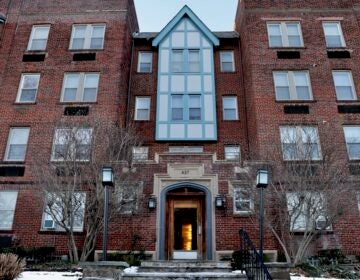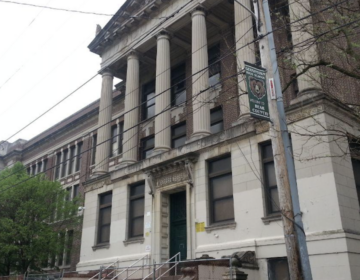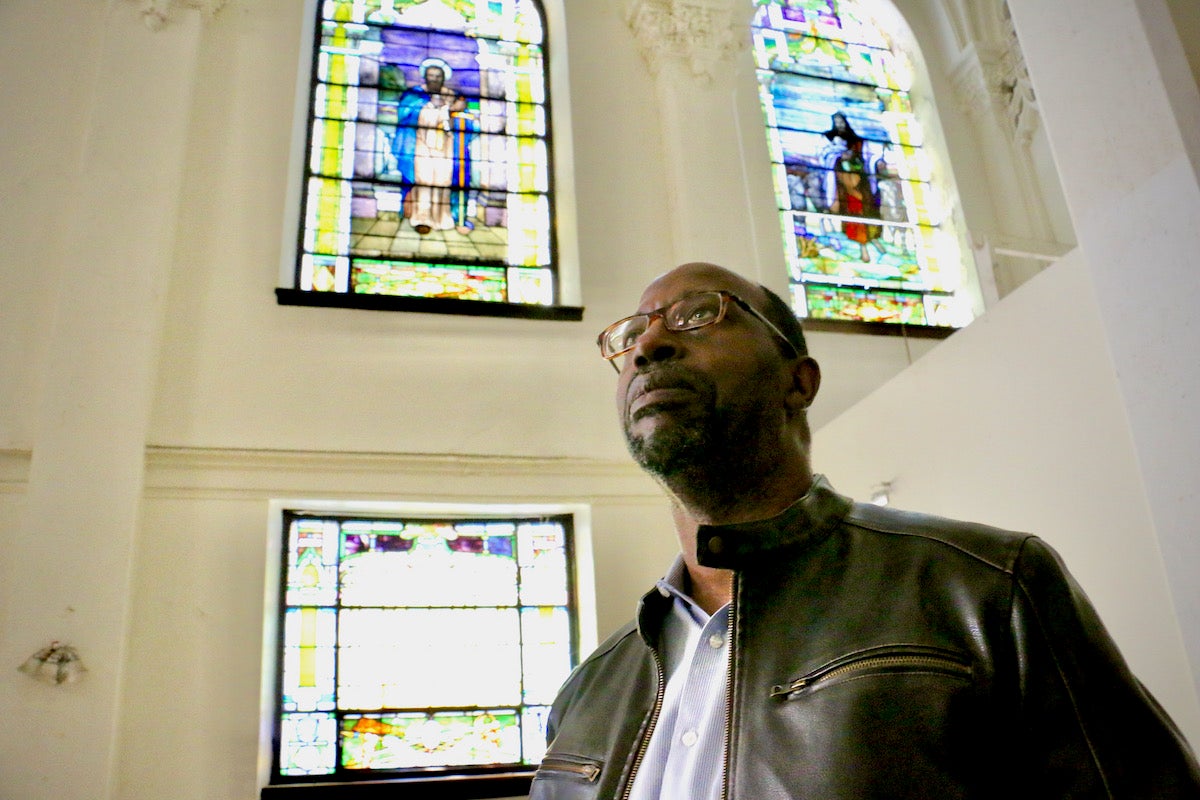I am a preservationist. This pandemic reminded me to see Philly’s ‘miracles’
Preservationist Paul Steinke rediscovers the wondrous yet fragile beauty of his West Philadelphia neighborhood, taking readers to 8 Garden Court sites.
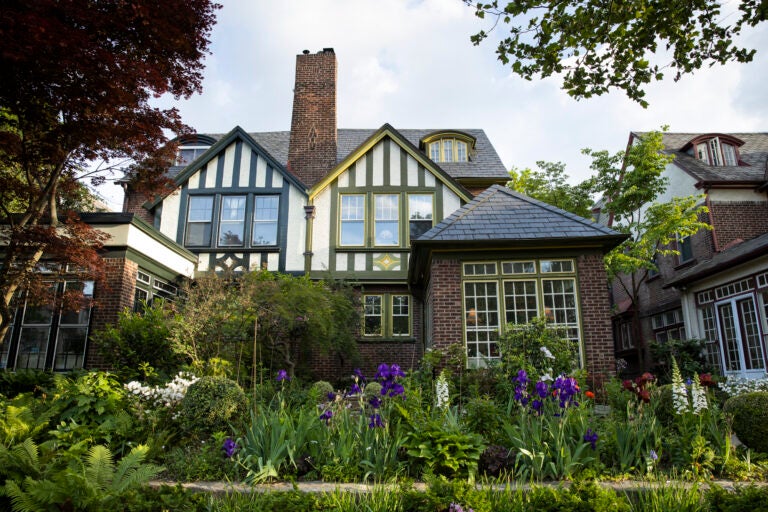
A garden bloom in front of a historic home in the Garden Court neighborhood. (Ryan M. Collerd for WHYY)
Are you on the front lines of the coronavirus? Help us report on the pandemic.
It started innocently enough. In March, on my first day of working from home, I ventured out for a mid-morning walk. I thought the stroll could turn into a nice routine for as long as the quarantine lasted. Of course, at the time I figured I would be working from home for a couple of weeks before returning to my daily commute to Center City. We all know how that turned out.
It was a sunny, chilly morning in my West Philadelphia neighborhood — a tiny enclave known as Garden Court. Perfect weather for finding under-the-radar historic treasures, as it turns out.
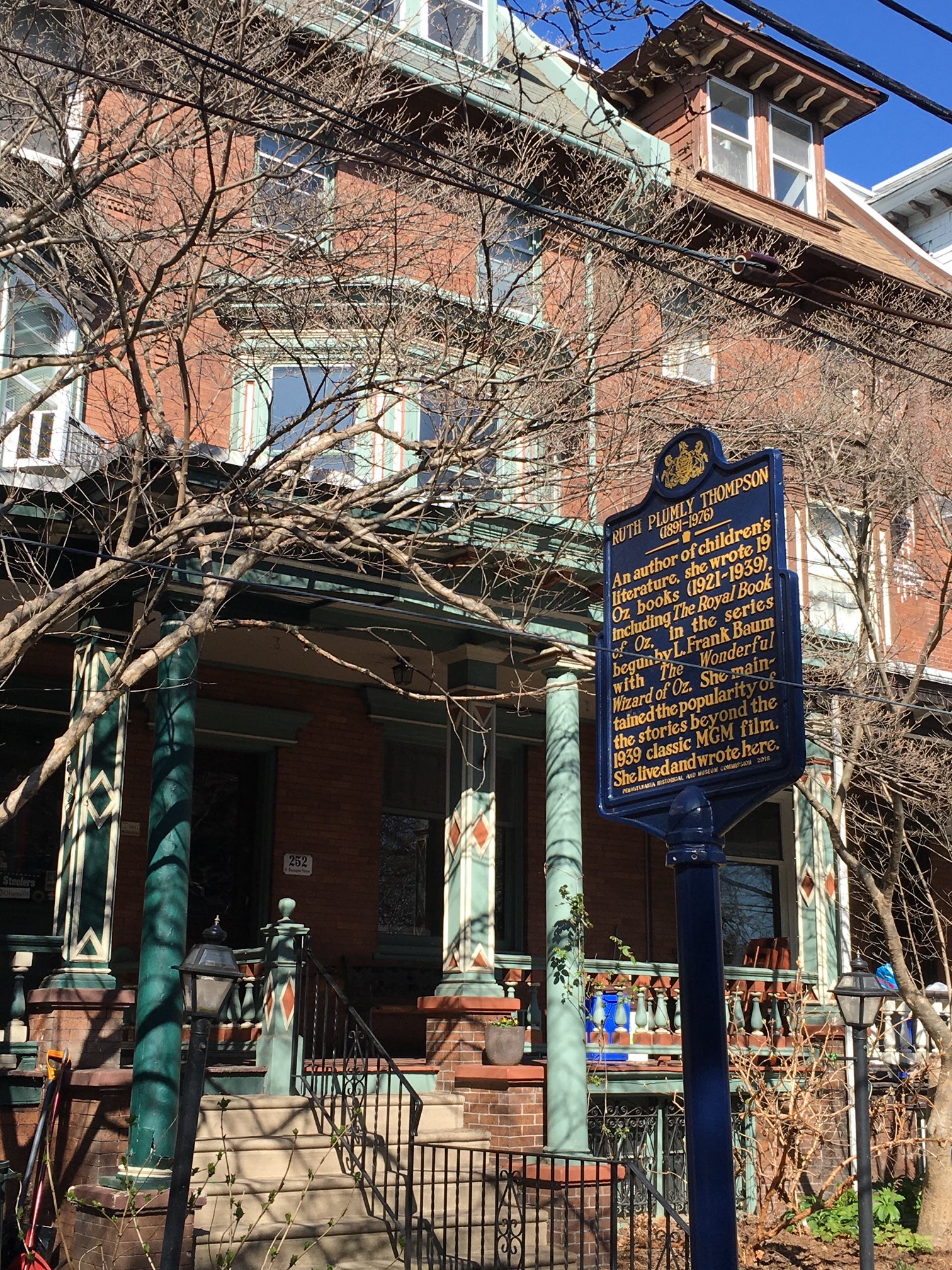
It took me about 15 minutes to encounter one of those blue and yellow state historic markers. This one marked the Farragut Street residence of writer Ruth Plumly Thompson (1891-1976). I snapped a photo and posted it to my Facebook page. Almost immediately the likes and comments piled up. Friends were astonished and delighted to learn that the author of 19 Wizard of Oz books between 1921 and 1939 lived and worked in West Philly.
I resolved to keep walking — and to try to find something interesting and/or beautiful each day.
In the early days, I staked out other historic markers within walking distance: the home of baritone and civil rights activist Paul Robeson, the world’s first Ronald McDonald House, the original American Bandstand studios, the world’s first digital computer, “ENIAC.”
I learned that the Jacobean Revival mansion at 4104 Locust Street was built in 1905 for Wilmer Atkinson (1840-1920), the founder and publisher of Farm Journal — a magazine for the agricultural industry that was published in Philadelphia for 139 years until moving to Kansas City in 2016. At its peak in the 1950s, it had 3.7 million subscribers.
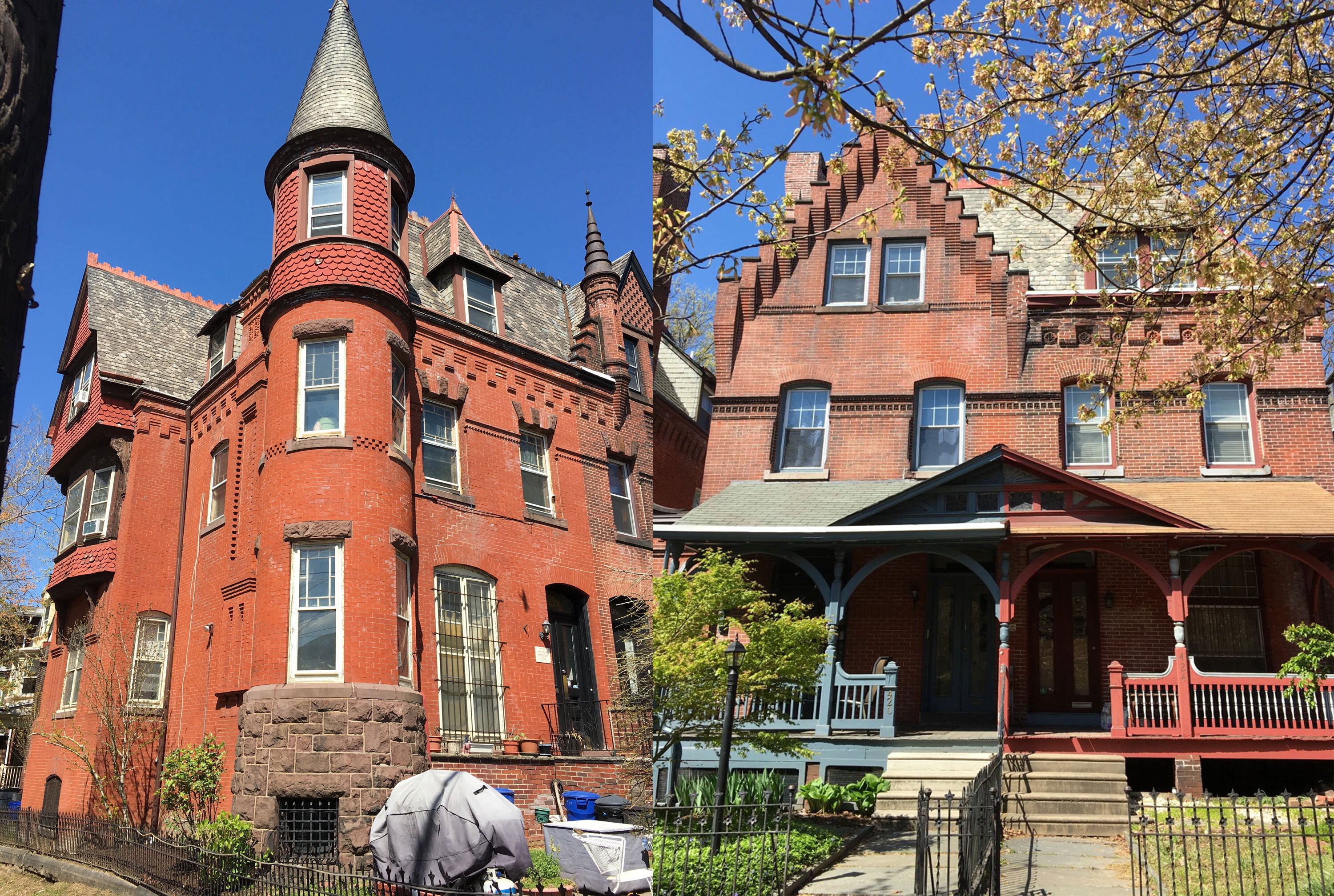
I was delighted in “420 Row,” a group of flamboyant Victorian twins built in the late 1880s on 42nd Street above Baltimore Avenue. The block was designated a local historic district in 2016. Another favorite was the Chester-Regent historic district designed by architect Willis Hale, also built in the 1880s. This community of 42 homes was designated a historic district in 2019. Yet another star was Woodland Terrace, a delightful block of Italianate houses designed by architect Samuel Sloan in the 1860s.
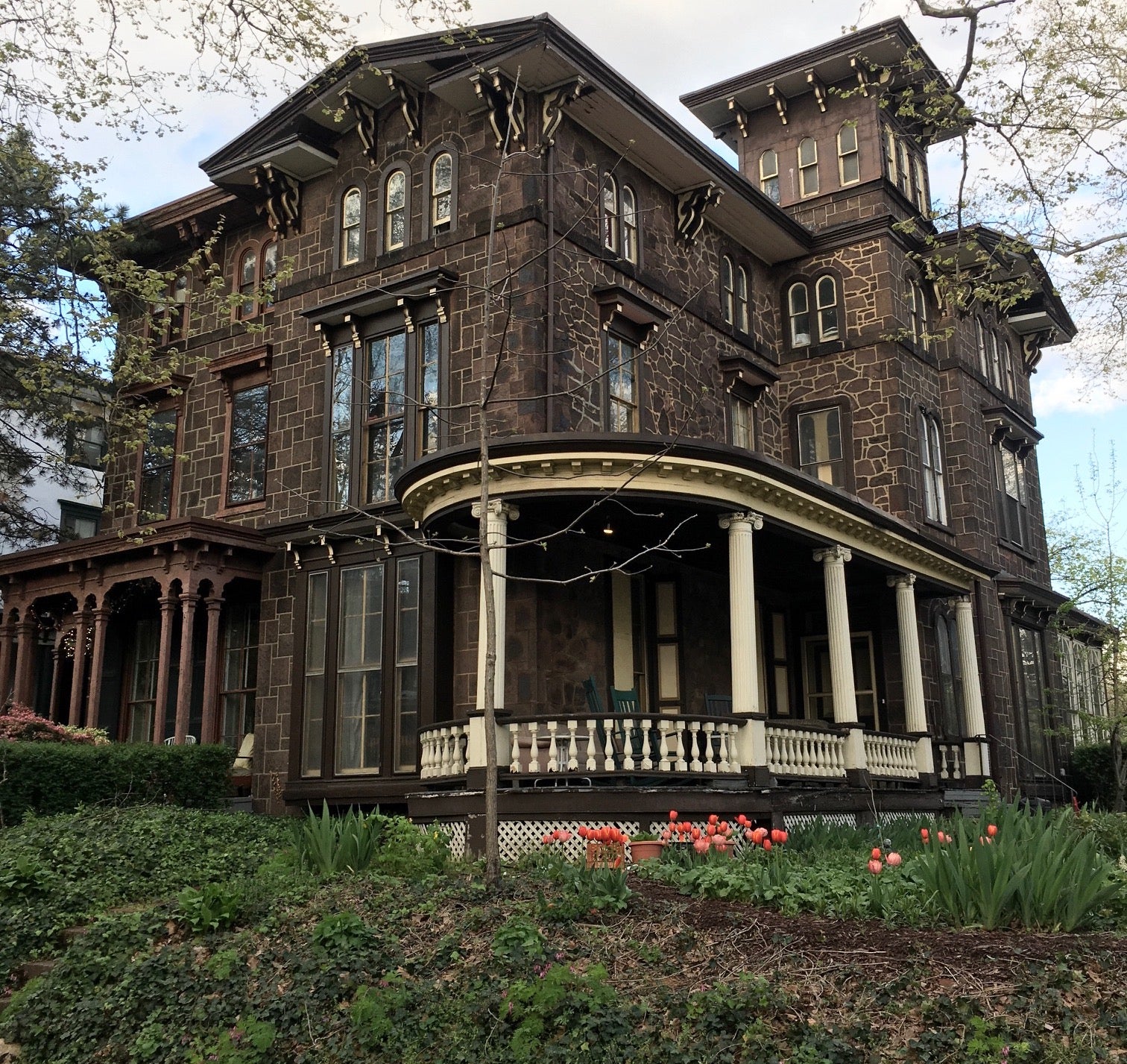
My daily history hunt turned into a source of meaning and purpose during a period of unceasing bad pandemic news — and gave me a reason to watch the miracle of springtime unfurl day after day.
Most years I’ve felt like the joys of the season pass me by. With the daily commute from home to work in the concrete canyons of Center City, spring would seem to fly by in the blink of an eye.
Now, forced to stay close to home, I’ve been able to savor the unfolding of spring as daffodils and forsythia gave way to tulips and cherry blossoms, then on to the greening of maples, oaks and sycamore, and finally to the delicious explosion of azalea and hydrangea blossoms. It is truly a wonder to behold in real-time.

Subscribe to PlanPhilly
Of course, my obsession with the architecture, history, and built environment of this part of West Philadelphia only drives home the fragility of it all.
Despite the designation of 420 Row and the Chester-Regent district as historic (and therefore protected by the Philadelphia preservation ordinance) in the past few years, vast stretches of the area — purported to the largest collection of Victorian-era housing in any American city — remain vulnerable to demolition and insensitive alteration.

Just in the past few years, several Victorian-era residences in good condition have been lost in favor of new student housing blocks distinguished mostly by their expediency and mediocrity. Efforts to protect more of the neighborhood with historic designation have been thwarted in decades past, and the city’s building boom of recent years has been a real threat to preserving the grace, charm and beauty of this historic urban community.
The pandemic will end, mercifully. Eventually, my former life will assert itself once again, perhaps slowly at first. But before long I’ll be riding the trolley downtown each day, working in an office tower, and racing from meeting to meeting and back again, forever feeling behind schedule and straining to keep up. Mind you, I’m not complaining. There’s joy in that too. But for a few months this spring the old routine was upended. And although disease, loss of life and economic free fall are the big (and tragic) news of 2020 so far I’m grateful for the opportunity I’ve had to indulge my own (old) new obsession.
Paul Steinke is executive director of the Preservation Alliance for Greater Philadelphia.
WHYY is your source for fact-based, in-depth journalism and information. As a nonprofit organization, we rely on financial support from readers like you. Please give today.




![CoronavirusPandemic_1024x512[1]](https://whyy.org/wp-content/uploads/2020/03/CoronavirusPandemic_1024x5121-300x150.jpg)

